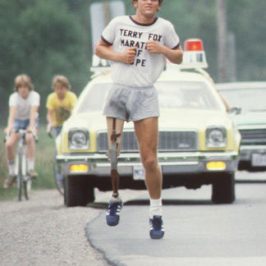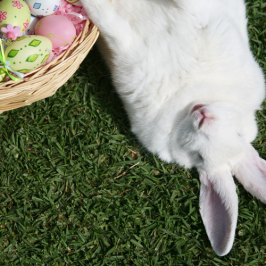by Brianna Casey, CEO – Foodbank Australia (and a Ryde District Mum!)
Food Waste
If you watched Episode 1 of ABC’s War on Waste program earlier this year, you might have been surprised by the amount of food waste in Australia – especially for there to be a whole television program dedicated to it! However despite there being so much waste, there is also a shocking number of Australians going hungry around the country, each and every day.
The Australian Government has estimated that food loss and food waste combined costs the Australian economy $20 billion per annum. Foodbank argues that the issue is not so much that there is not enough food, rather the food isn’t getting to the right places in time to avoid going to landfill.
To address this issue, Foodbank joined forces with the Federal Environment Minister, the Hon Josh Frydenberg MP, and other key stakeholders in the development of Australia’s first ever National Food Waste Strategy. The Australian Government has committed to halving food waste by 2030 (consistent with Target 12.3 of the UN Sustainable Development Goals), with Foodbank playing an important part in the solution.
Food Insecurity
Not only do we have a massive food waste problem in Australia, we also have a massive food insecurity problem. Food insecurity is a situation that exists when people lack secure access to sufficient amounts of safe and nutritious food for normal growth and development, and an active, healthy lifestyle. In October this year, Foodbank released its annual Foodbank Hunger Report which revealed that a shocking 3.6 million Australians, or 15% of the population, have experienced uncertainty around where their next meal is coming from in the last 12 months – and they are not who you’d think.
Almost half of food insecure Australians are employed and 2 in 5 of these households are families with dependent children, including families from the Ryde area, where housing affordability and high costs of living are hitting household budgets hard. When you’re living mortgage payment to mortgage payment, or rental payment to rental payment, it doesn’t take much to throw your budget out, whether it be an unexpected medical incident, your car breaking down, a fridge on its last legs or your employer having to let staff go. When something as simple as that happens, all of a sudden, food becomes a discretionary item, forcing families to choose between paying a bill and paying for groceries.
Rescuing and Sourcing Food
Foodbank works from paddock to plate, rescuing and sourcing food and groceries from farmers, manufacturers and retailers, and distributing these items to frontline charities around the country for people in need of food relief.
Farmers right across the country support Foodbank by donating grain, fruit and vegetables, meat, rice, eggs and milk. This fresh produce is used for distribution and/or as manufacturing ingredients for Foodbank’s Collaborative Supply Program, recognised as one of the most innovative foodbanking collaborations in the world. Through this program, we ensure consistent supplies of essential food items in our warehouses every day. This means that every day in every Foodbank warehouse across the country we have staple products like pasta, sausages, cereal, and long life milk available to supply to people in need.
But Wait There’s More
It’s important to note that whilst our name might be focused on food, grocery items are also in hot demand. If you are facing circumstances where you can’t afford to put a meal on the table, the chances are you also can’t afford shampoo and conditioner, laundry detergent, nappies and sanitary items, so we gratefully receive donations of these types of products too.
Foodbank acts as a giant kitchen pantry, redirecting food and groceries away from landfill to a network of charities and then through to the kitchens of people who need it most. We are Australia’s largest hunger relief organisation, providing 63 million meals a year to more than 2,600 charities and 1,750 schools (through School Breakfast Programs). Each year we distribute more than 35 million kilograms of food and groceries, equating to more than 172,000 meals a day. At least 30 million kilograms of these food and groceries are sourced through ‘food rescue’, highlighting the phenomenal volume of edible food that, without Foodbank, may otherwise be sent to landfill. Some of our generous suppliers donating food and grocery items come from our own Ryde area, whether they be supermarkets, greengrocers, or schools and community groups hosting food drives.
What you can do to help!
Volunteering
A number of Ryde District Mums have already volunteered at the Foodbank NSW & ACT warehouse in Glendenning through corporate volunteering with their employer. You can also volunteer as an individual or in small groups. Volunteering shifts are for half a day (generally starting at 8:30am) on weekdays. You can find out more here.
Skilled Volunteering
We run on a skeleton staff and are heavily reliant on pro-bono support for campaigns in particular. You might like to volunteer your services with basic administrative tasks, policy/legislative advice, IT support, creative design etc. as a one-off or ongoing way of supporting us.
Food Drives
Food drives are a great way for individuals, schools, clubs, organisations and companies to help us keep up the supply of non-perishable food. Click here for further information on how to run a food drive and make it fun!
Financial Donations
Donating on a regular basis is the most impactful way to support Foodbank. This Christmas, your donation will go towards our goal of delivering 20,000 food hampers. Click here to donate now. If you or someone you know would like to support Foodbank’s life-changing work on a larger scale, please contact our partnerships team for more information.
Supporting our Dose of Reality campaign
Aussies are food obsessed – we have an unhealthy obsession with food trends like smashed avo and green juice – but our research reveals there’s an alarming food trend that we should be following, and which very few people know about. It’s called food insecurity and affects more than 3.6 million Australians each year. So, to get the public’s attention, we’ve made our own green juice. Using hidden ink, the more you drink, the more it reveals facts about this hidden crisis. We would love for you to share and like our Dose of Reality posts on our Facebook and Instagram To find out more about the campaign, visit foodbank.org.au/dose/.
On behalf of Foodbank Australia, a massive thank you to the wonderful Ryde District Mums community for all of your support to date, and your help in shining a spotlight on food insecurity in Australia.














